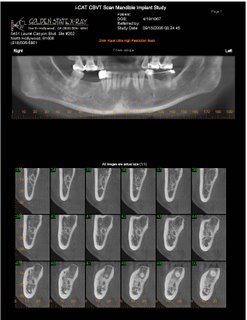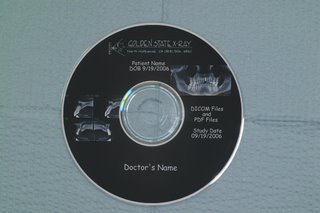Like Matt Kroona I sometimes ponder what I am doing, more correctly if my doing is correct.
1)I want to know what the criteria is for creating the arch for the "oblique" view (pano). I recently had a mandibular canal large enough to drive a truck through and was playing around with creating the "best" visionary of the canal with regards to the pano. I started to wonder if showing the canal vs keeping the perpendicular for the cross sections conflicted. When I am creating the arch for the (pano) I try to keep the perpendicular as close to 90 degrees without losing the canal but what if your losing the canal by keeping the perpendicular?
2)On another tangent. I am checking each scan for movement; by using a technique suggested last iCAT meeting. This entails going to the raw data, rotating the skull then bringing the cursor to the symphisis and rolling the ball from 366 to 1. I am finding that many times there is a contrast change from the 366 to 1 giving the "impression" that there is patient movement. I recently started using the velcro strap across the patients forehead and it seems to help.
3)Lastly, does anyone check the success of the calibration by taking a scout view and seeing how the "white screen" appears? Arun had made a comment one day, when I was sharing my computer with him, that he could see that I needed to do another calibration because the screen was not uniformed, too much saturation. You can actually look at the center of your screen and it appears as though there is a vertebre running down the center and the outer borders have a greyish look.
OK folks, I haven't gone over the Matt's or Eric's script but I am close.

